One of my most vivid childhood memories is Sunday family lunches at my grandmother’s house in Beirut. All 14 of us cousins would be sat in the TV room at lunchtime, arguing about which Power Ranger was the coolest, while the adults debated more serious matters in between the clinking of cutlery in the main dining room.
These meals always ended with dessert, such as Turkish delight, which was a perennial favourite of the Soubra household. Our favourite way to enjoy the sweet treat was placing it between two Gandour biscuits, creating the perfect combination of sticky, chewy and crunchy. These memories are something I will treasure forever, which is why I was thrilled when the team behind the iconic Turkish delight brand, Hacı Bekir, invited me to visit their newest branch. Excited to reconnect with this beloved part of my childhood, I boarded a plane to Istanbul.
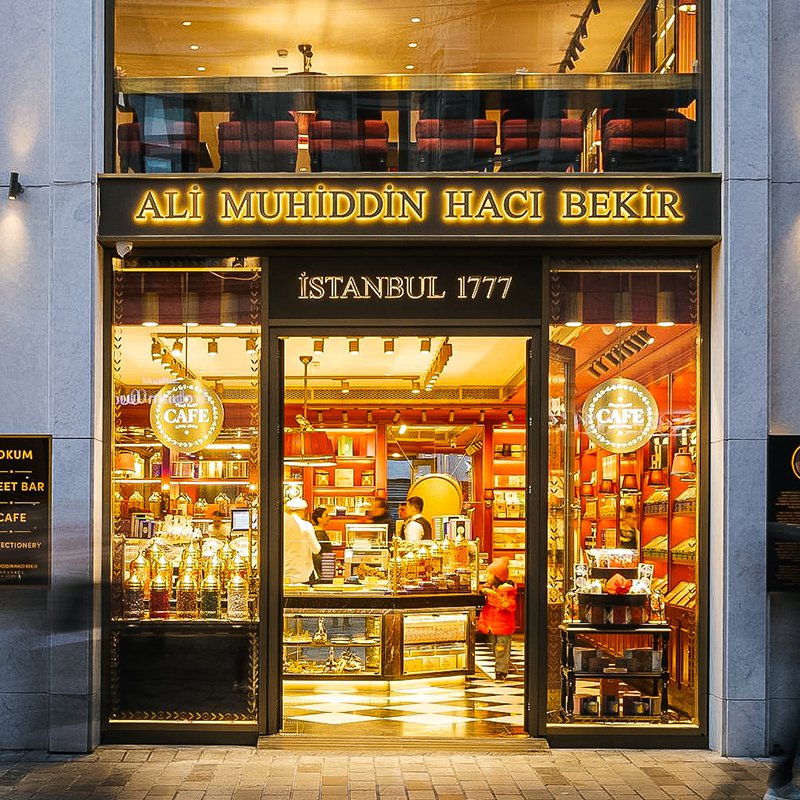
Hacı Bekir is the oldest registered company in Türkiye and one of the oldest 100 in the world
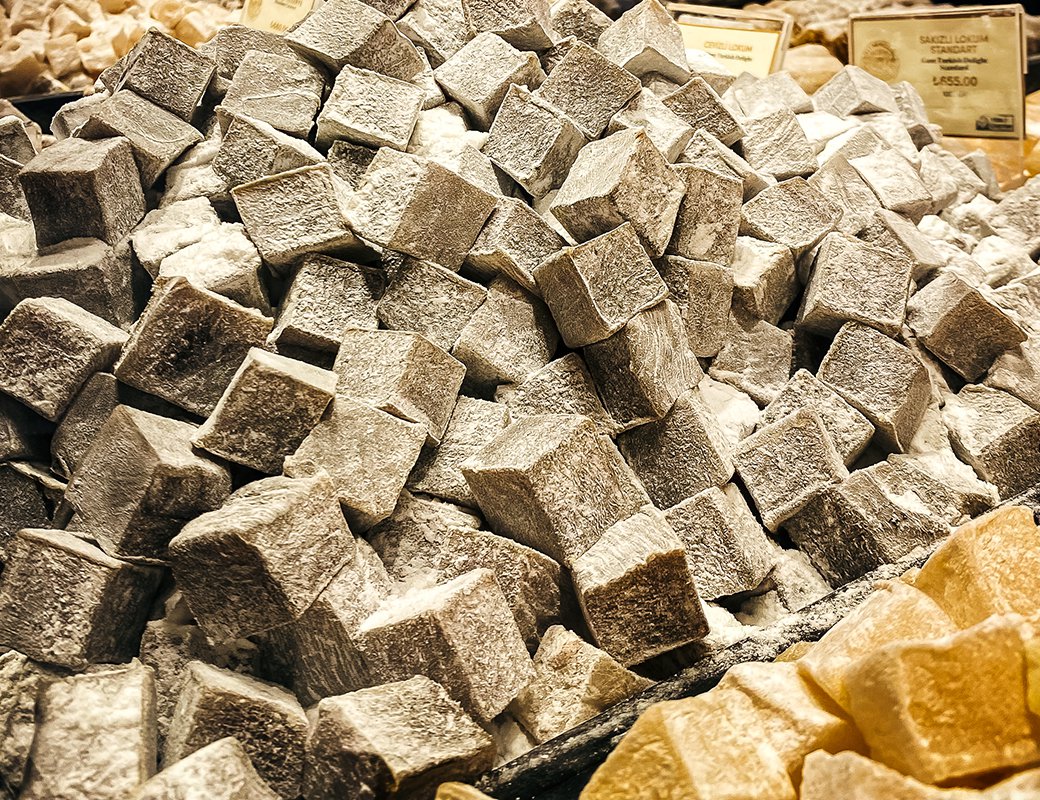
The term ‘Turkish delight’ is rumoured to have been made popular after an English customer used that expression to refer to Hacı Bekir’s lokum back home
Hacı Bekir is Turkey’s first Turkish delight maker and one of the most popular confectioners in the country. Established in 1777, the brand's story began when Hacı Bekir opened a small shop in the province of Kastamonu after his pilgrimage to Mecca. His lokum and akide şekeri* (hard candy) became so popular that they caught the attention of Sultan Mahmud II, who invited him to his palace to make his sought-after delicacies as the chief confectioner.
Flour, honey and molasses were the main ingredients used to make lokum in the Ottoman Empire, but by the 19th century, refined sugar and starch were introduced to the market through European trade. Hacı Bekir developed an improved base for lokum with the newly commercialised ingredients, which has since become the standardised recipe we know today. Today, Hacı Bekir is still a family-run business, which many believe is the secret to preserving the founder’s legacy.
Hacı Bekir, now known as Ali Muhiddin Hacı Bekir, is currently run by sixth-generation family members. Their goal is to expand to new markets and attract international customers with a fresh concept that presents a modernised version of their centuries-old heritage. Situated on the lively Istiklal Avenue, just a short walk from Taksim Square, the three-story boutique includes a confectionery store, a café and a sweet bar.
I was immediately reminded of Sundays at Grandma's upon seeing the stacks of artisanal Turkish delight on the main shop floor. The gem-like confections, available in a variety of flavours, were beautifully showcased alongside other hand-made treats such as akide şekeri, pastes, halva and baklava. The space comes to life with a glossy black and white checkered marble floor, adding a modern touch. The countertops with gold accents pay homage to Turkey's opulent architectural heritage. The walls are adorned with red floor-to-ceiling displays featuring ornate gift boxes. The buzzing shop is manned by staff meticulously packaging what seemed like a never-ending stream of orders.
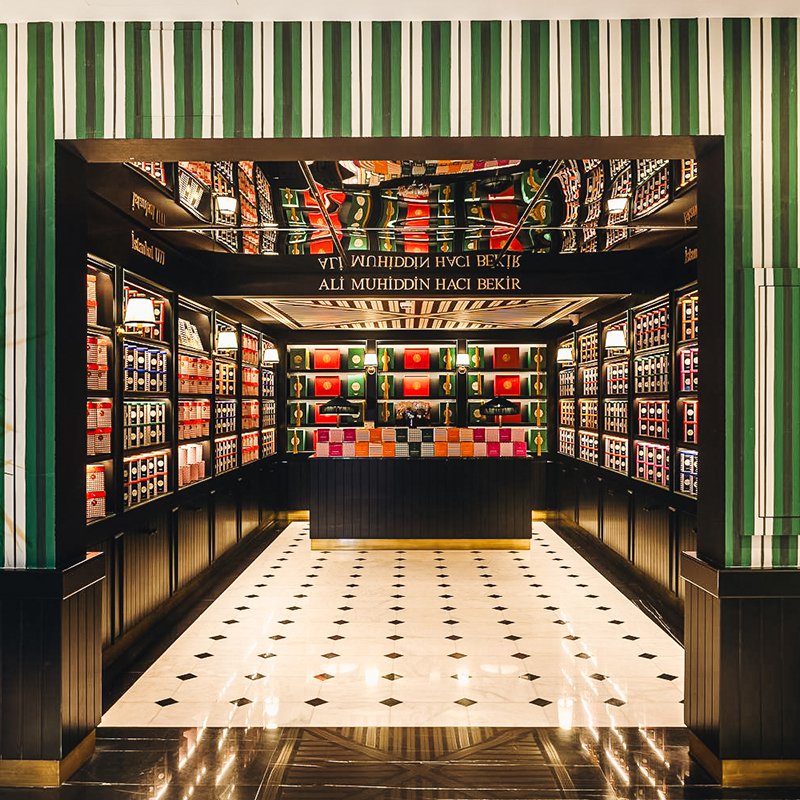
Many Turkish families serve lokum at gatherings and special occasions
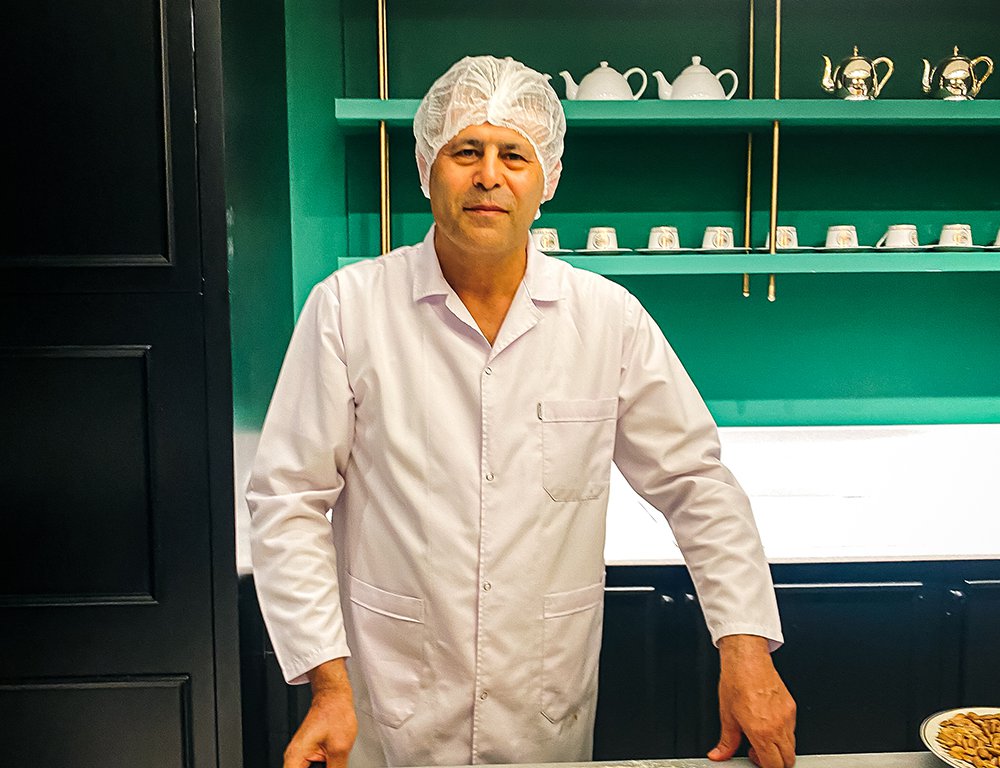
Having worked in different departments, Mehmet learned the art of lokum-making at Hacı Bekir, eventually becoming a master
The sweet bar downstairs has an elegant conveyor belt with bite-sized sweets on rotation for customers to try. This is where I met Mehmet, a master confectioner who has worked with the brand for over 33 years. That day, he was finishing a batch of almond lokum – one of my favourites. Mehmet scattered fresh almonds onto a prepared sheet of lokum – made using the same 200-year-old recipe – rolled it like a burrito on a bed of desiccated coconut, then sliced it into medallions. The result was an explosion of flavours and textures; the nuttiness of the almonds danced in harmony with the sweetness of the lokum while the bouncy texture created a playful eating experience that could turn adults into giddy kids. I also tried Mehmet’s freshly made sesame akide şekeri, which had a delightful blend of subtle bitterness from the sesame and sweetness from the caramel.
Hacı Bekir offers a variety of lokum flavours including rose, coconut, coffee, mint, hazelnut, and double-roasted pistachio (Mehmet’s favourite) year-round. All of which are hand-made using natural ingredients. Seasonal varieties such as kaymak, a dairy product similar to clotted cream made with buffalo milk, are also available during limited periods. I was disappointed to miss it, as it is only produced during the colder months from October to April. Their other flagship product, akide şekeri, comes in flavours like cinnamon, bergamot, mastic, anise, lemon and hazelnut.
As I was leaving, Mehmet and the team gave me a box of almond lokum and a tub of sesame akide șekeri. It was hard not to skip my way out of the store, thrilled as I was with my treats and having learned the history behind the sweet that’s linked to one of my fondest memories. And with that, I hope to try Hacı Bekir’s lokum once again, this time in another part of the world.
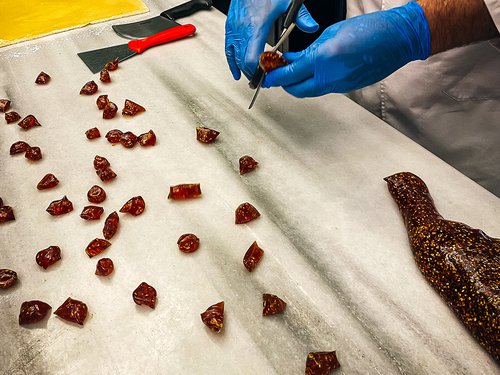
*While 'şeker' means candy in Turkish, the term ‘akide’ stems from the word ‘akit’, which means ‘sealing a deal’. During the Ottoman Empire, this hard candy was served after agreements, such as when soldiers successfully negotiated better salaries. It also had a symbolic role in various celebrations, such as religious holidays (bayrams) and weddings.

